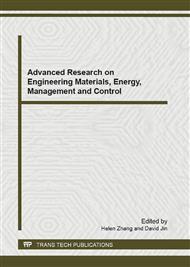p.1203
p.1207
p.1211
p.1215
p.1220
p.1224
p.1228
p.1233
p.1237
Electrospun MWCNTs/Poly(lactic-co-glycolic acid) Composite Nanofibrous Drug Delivery System
Abstract:
In this study, nanotubular materials multi-walled carbon nanotubes (MWCNTs) were used to encapsulate a model drug, doxorubicine hydrochloride (DOX). Then, the drug-loaded nanotubes (DOX/CNTs) with an optimized drug encapsulation percentage were mixed with poly (lactide-co-glycolide) (PLGA) polymer solution for subsequent electrospinning to form drug-loaded composite nanofibrous mats. The morphology was characterized using scanning electron microscopy (SEM). The proliferation of mouse fibroblast cells cultured on both PLGA and CNTs-doped PLGA fibrous scaffolds were compared through 3-(4,5-dimethylthiazol-2-yl)-2,5- diphenyl tetrazolium bromide (MTT) assay of cell viability and SEM observation of cell morphology. In vitro drug release behavior was examined using UV-vis spectroscopy. We show that the incorporation of CNTs and DOX/CNTs within the nanofibrous mats does not significantly change the morphology of the mats. In addition, our results indicate that this double-container drug delivery system (both PLGA polymer and CNTs are drug carriers) is beneficial to avoid the burst release of the drug. The drug loaded elctrospinning composite nanofibrous mats developed in this study may find various applications in tissues engineering and pharmaceutical sciences.
Info:
Periodical:
Pages:
1220-1223
Citation:
Online since:
January 2012
Authors:
Price:
Сopyright:
© 2012 Trans Tech Publications Ltd. All Rights Reserved
Share:
Citation:


